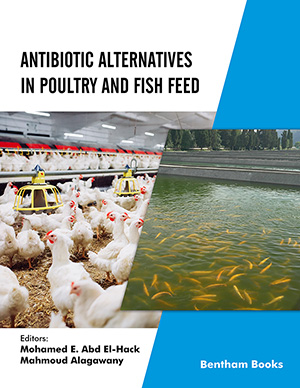Abstract
Background: Apples often experience postharvest damage due to being attacked by mold organisms. Several groups of molds such as Aspergillus sp., Penicilium expansum, Botrytis cinerea, and Venturia sp. can cause a serious postharvest disease exhibited as watery regions where areas of blue-green tufts of spores develop. Current methods using fungicides to control pathogenic fungi can cause resistance if applied in the long term. An alternative procedure using yeast as a biological agent has been found.
Objective: The aim of this study is to screen potential yeast, which has the ability to inhibit the growth of Aspergillus brasielensis (isolate A1) and Aspergillus flavus section flavi (isolate A17) isolated from apple fruits.
Methods: Antagonism test using YMA dual culture medium using in vitro assays and ITS rDNA identification were performed.
Results: The result showed that 3 out of 19 yeast isolated from Cerbera manghas L, T1, T3 and T4, demonstrated the potential ability as a biocontrol agent. ITS rDNA identification demonstrated that T1 has a similarity to Rhodotorula mucilaginosa while T3 and T4 were identified as Aureobasidium sp. nov. The 3 isolates exhibited the ability to reduce the growth of A. brasiliensis sensu lato better than dithane 0.3% with a Disease Incidence (DI) of 100% and a Disease Severity (DS) value of 45%. Only isolate T1 and T3 were able to reduce decay symptoms in apples inoculated with A. flavus sensu lato (with DO and DS were 100% and 25%, respectively) compared to dithane pesticides 0.3%.
Conclusion: This study indicated that competition between nutrients occurs between pathogenic molds and under-yeast in vitro and in vivo conditions. However, further studies in the future might be able to elucidate the ‘killer’ activity and interaction with the pathogen cells and the bio-product production using Rhodotorula mucilaginosa and Aureoubasidium namibiae strains to control postharvest diseases.
Keywords: Apple, Aureobasidium pullulans, biocontrol fungi, Rhodotorula mucilaginosa, molds, fungicides.
[http://dx.doi.org/10.1016/j.ijfoodmicro.2017.10.027] [PMID: 29107842]
[http://dx.doi.org/10.1007/978-981-10-5062-6_6]
[http://dx.doi.org/10.1007/s10341-014-0200-z]
[http://dx.doi.org/10.1016/j.ijfoodmicro.2018.03.019] [PMID: 29653393]
[http://dx.doi.org/10.1515/9783110412789-009]
[http://dx.doi.org/10.31797/vetbio.455687]
[http://dx.doi.org/10.1016/j.funbio.2015.06.011] [PMID: 26466874]
[http://dx.doi.org/10.1016/j.biocontrol.2018.02.001]
[http://dx.doi.org/10.1016/j.micres.2015.04.003] [PMID: 25960430]
[http://dx.doi.org/10.20546/ijcmas.2016.505.007]
[http://dx.doi.org/10.1007/978-981-10-5062-6_7]
[http://dx.doi.org/10.1016/j.biocontrol.2017.04.002]
[http://dx.doi.org/10.1002/jobm.201700264] [PMID: 29105800]
[http://dx.doi.org/10.1016/j.biocontrol.2018.09.002]
[http://dx.doi.org/10.1080/14786419.2014.939083] [PMID: 25078877]
[http://dx.doi.org/10.1016/j.egypro.2014.10.295]
[http://dx.doi.org/10.1016/j.cell.2012.11.043]
[http://dx.doi.org/10.1016/j.biocontrol.2015.10.012]
[http://dx.doi.org/10.1016/j.biocontrol.2008.05.015]
[http://dx.doi.org/10.1016/B978-0-12-372180-8.50042-1]
[http://dx.doi.org/10.1016/S0022-2836(05)80360-2] [PMID: 2231712]
[http://dx.doi.org/10.1016/j.biocontrol.2018.03.001]
[http://dx.doi.org/10.1146/annurev.phyto.40.120401.130158] [PMID: 12147766]
[http://dx.doi.org/10.1016/j.biocontrol.2009.05.001]
[http://dx.doi.org/10.1007/s00294-019-00938-2] [PMID: 30666394]
[http://dx.doi.org/10.1016/j.proche.2015.03.030]
[http://dx.doi.org/10.3390/toxins9100333] [PMID: 29053588]
[http://dx.doi.org/10.1016/j.micres.2016.04.012] [PMID: 27296964]
[http://dx.doi.org/10.1099/ijs.0.65021-0] [PMID: 17684283]
[http://dx.doi.org/10.1099/ijs.0.65123-0] [PMID: 18319485]
[http://dx.doi.org/10.1088/1757-899X/434/1/012125]
 61
61 1
1




















